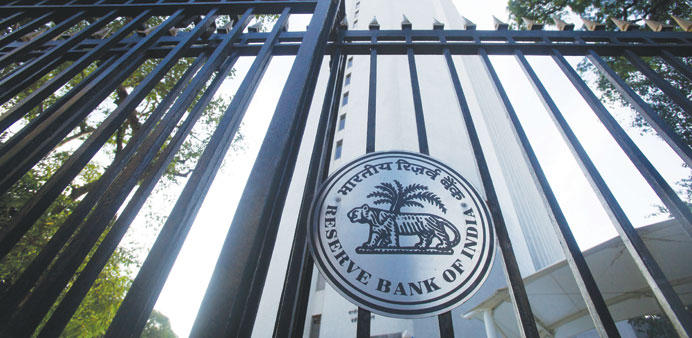Bloomberg, Reuters/Mumbai
India’s rupee climbed to the strongest level in more than a week on optimism steps taken by the central bank to boost the supply of dollars will alleviate depreciation pressure on the currency.
In his first briefing since taking office as Reserve Bank of India governor on September 4, Raghuram Rajan announced a plan to provide concessional swaps for banks’ foreign-currency deposits, a move that will boost the central bank’s reserves by $10bn, according to Bank of America Merrill Lynch. Indian exporters are also probably converting overseas earnings, according to FirstRand.
“The swap news was a positive for the rupee,” said Paresh Nayar, head of currency and money markets at FirstRand in Mumbai. “There was demand for the dollar this morning, but it seems to have eased now.”
The rupee advanced 1.3% to 65.2500 per dollar in Mumbai, according to prices from local banks compiled by Bloomberg. The currency, which touched an all-time low of 68.8450 on August 28, rose earlier to 65.0100, the highest level since August 27. It gained 0.7% since August 30, snapping a three-week loss. Indian markets are shut on September 9 for a local holiday.
Technical charts indicate the rupee may advance toward 63 per dollar if it closes stronger than 65.70, analysts at Edelweiss Financial Advisers, including Mumbai-based Sahil Kapoor, wrote in a research report yesterday.
Investors have factored in, “to an extent,” a potential paring of US stimulus as the world’s largest economy recovers, Nayar said. Non-farm payrolls increased by 180,000 in August, a Bloomberg survey of economists shows before data due today, while the unemployment rate probably held at 7.4%, the lowest since December 2008. The Federal Reserve meets September 17-18 to assess its bond-buying programme that’s spurred demand for emerging-market assets.
Global funds cut holdings of Indian debt by $9bn since the start of June, exchange data show. The nation’s current-account deficit rose to a record 4.8% of gross domestic product in the year ended March 31 and external debt climbed to 22.2% of GDP, the highest since 2001.
“The recent phases of sharp and sustained currency depreciation are a reflection of the combination of structural domestic problems and global policy expectations,” economists at Kotak Mahindra Bank in Mumbai, including Suvodeep Rakshit, wrote in a research report yesterday.
One-month implied volatility in the rupee, a measure of expected moves in the exchange rate used to price options, rose 93 basis points, or 0.93 percentage point, this week to 21.66% and dropped 38 basis points yesterday.
“While the new RBI governor was given a warm welcome by the rupee, it would be prudent to remember that we are still not out of the woods,” the Kotak Mahindra economists wrote. “Structural changes, ultimately, are the way forward to stabilise long-term currency dynamics.”
Three-month onshore rupee forwards rose 1.4% to 66.79 per dollar, data compiled by Bloomberg show. Offshore non- deliverable contracts climbed 1.3% to 67.35.
Traders are monitoring global developments. The US posts monthly employment data later in the day, which could help determine a timeline on when the Federal Reserve will taper its massive stimulus programme, while concerns about war in the Middle East could also sour sentiment.
“I think the rupee has already touched a near term bottom. We have to watch how the tension between US and Syria builds up because if war breaks, one more leg down may be seen but I still expect 68.80 to be the bottom,” said Hari Chandramgethen, head of foreign exchange trading at South Indian Bank. The Reuters poll expects the rupee to firm to 65 rupees per dollar by November and 64.5 by August 2014.
Still, traders say the government will need to do its part by passing politically tough reforms needed to fix the economy, even with general elections due by next May, with growing speculation of a potential hike in fuel prices.
The need to act is seen by markets as pressing ahead of a potential burst of volatility in global markets. The most immediate global trigger could be US non-farm payrolls later in the day.
Fears of Fed tapering have roiled emerging markets such as India for months, prompting foreign investors to sell currencies, stocks and bonds, which has supported the dollar against other currencies.
“The Governor’s action plan was well accepted by market participants,” said Shakti Satapathy, a fixed income strategist with AK Capital.
“But the key would be the government’s intent in addressing the CAD (current account deficit) and subsidy burden at a faster pace amidst positive US data points that might lead to an early exit by Fed’s from the stimulus measures,” he added.

On September 4, RBI governor Raghuram Rajan announced a plan to provide concessional swaps for banks’ foreign-currency deposits, a move that will boos


